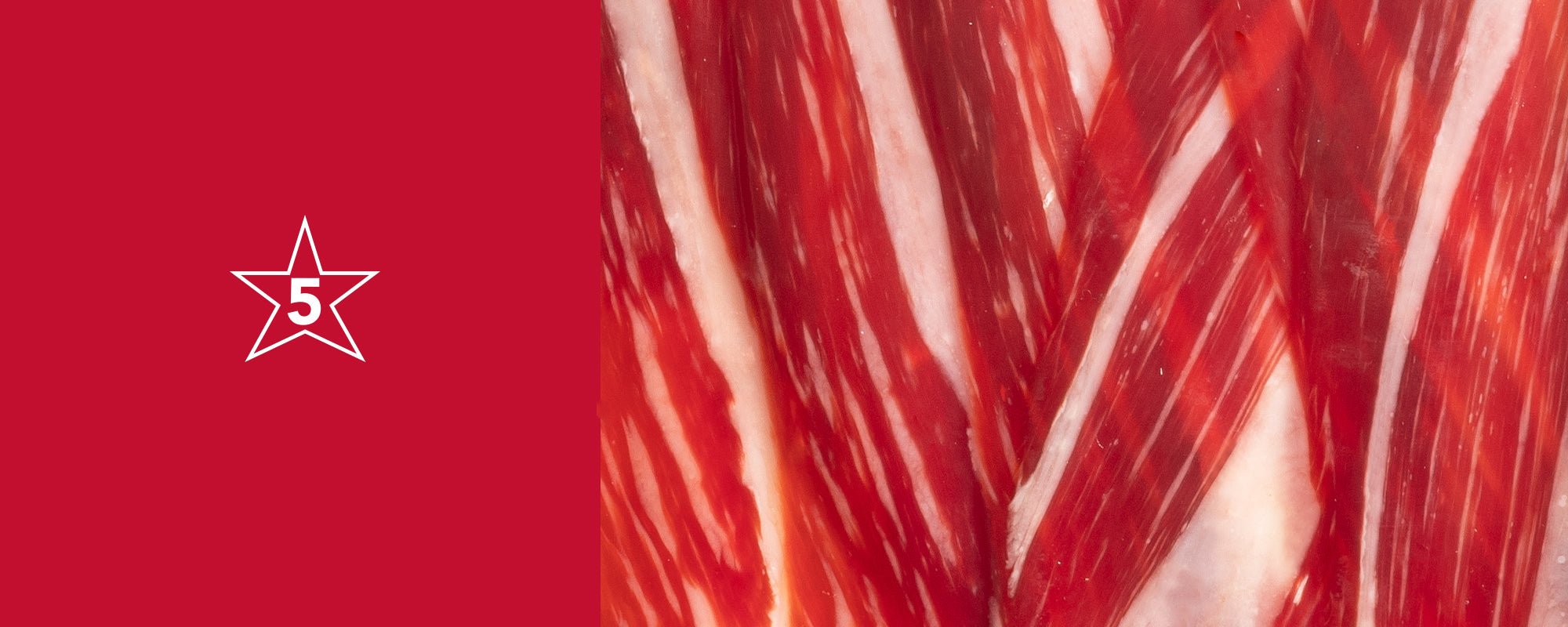15 productos
-

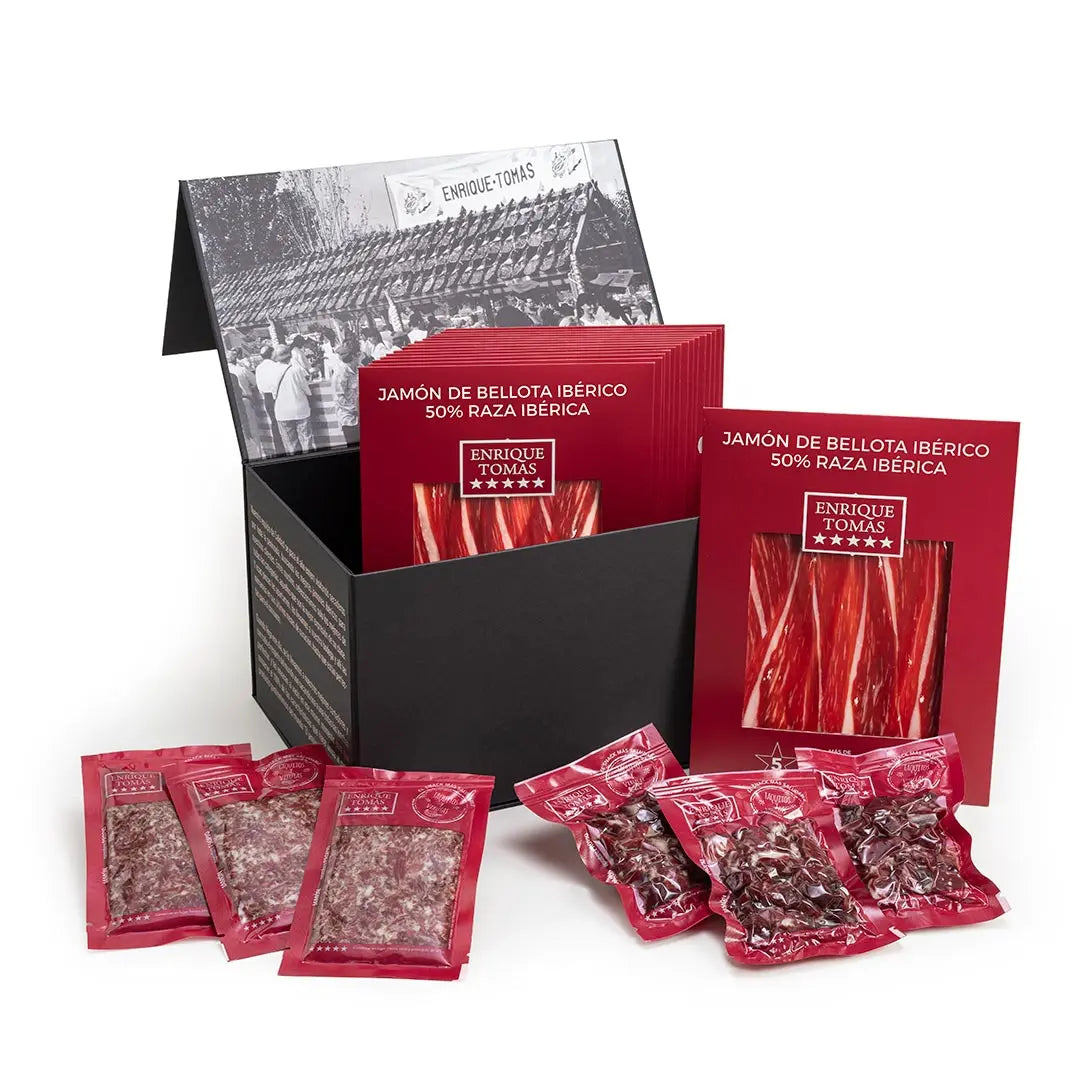 Jamón de Bellota Ibérico 50% raza Ibérica - Selección | No te cortesJamón de Bellota Ibérico 50% raza Ibérica - Selección | No te cortes
Jamón de Bellota Ibérico 50% raza Ibérica - Selección | No te cortesJamón de Bellota Ibérico 50% raza Ibérica - Selección | No te cortes- Precio regular
-
460,00 € - Precio regular
-
0,00 € - Precio de venta
-
460,00 €
Envío gratisVista rápida
-

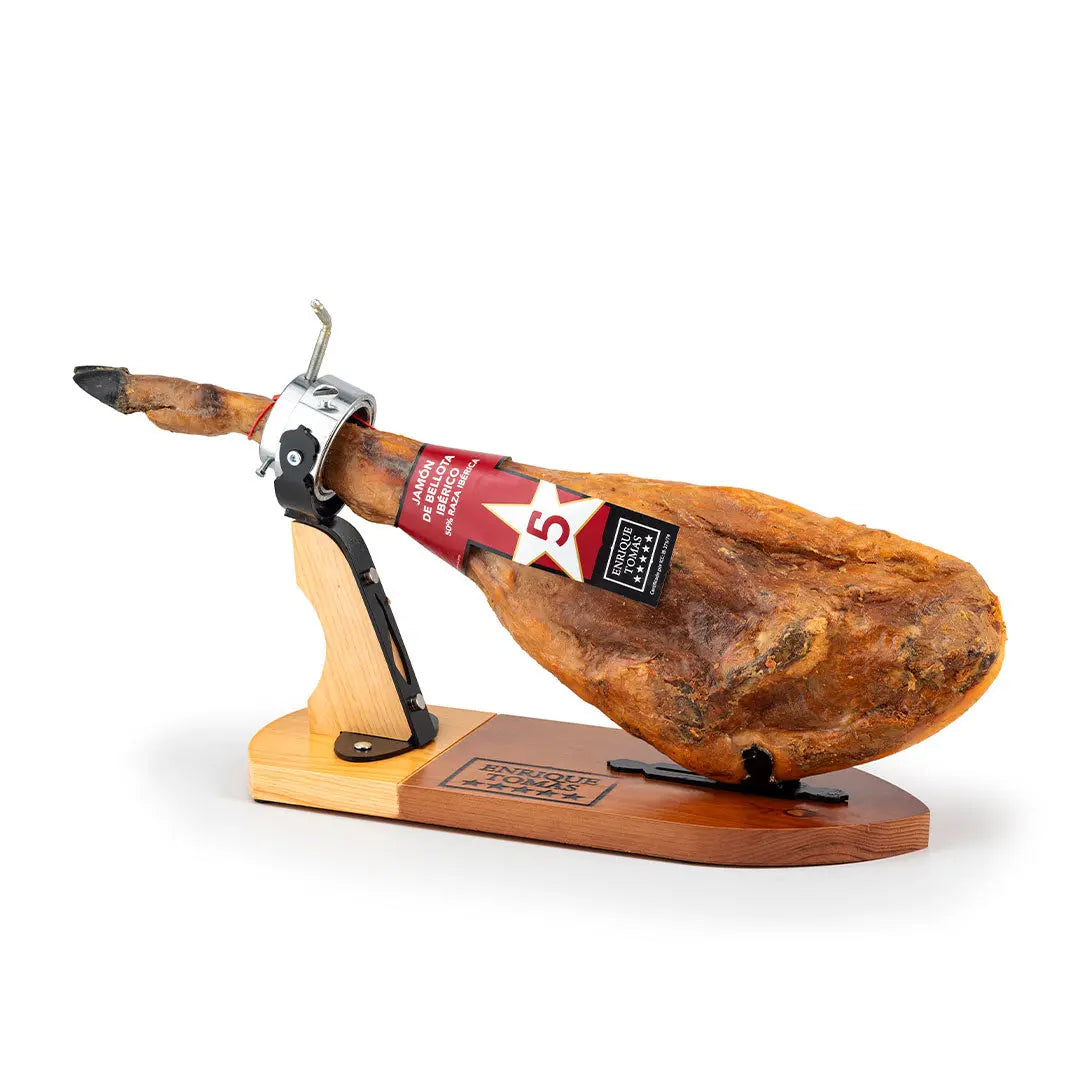 Jamón de Bellota Ibérico 50% raza Ibérica - Selección 9KgJamón de Bellota Ibérico 50% raza Ibérica - Selección 9Kg
Jamón de Bellota Ibérico 50% raza Ibérica - Selección 9KgJamón de Bellota Ibérico 50% raza Ibérica - Selección 9Kg- Precio regular
-
450,00 € 460,00 € - Precio regular
-
0,00 € - Precio de venta
-
450,00 € 460,00 €
Envío gratisVista rápida
-

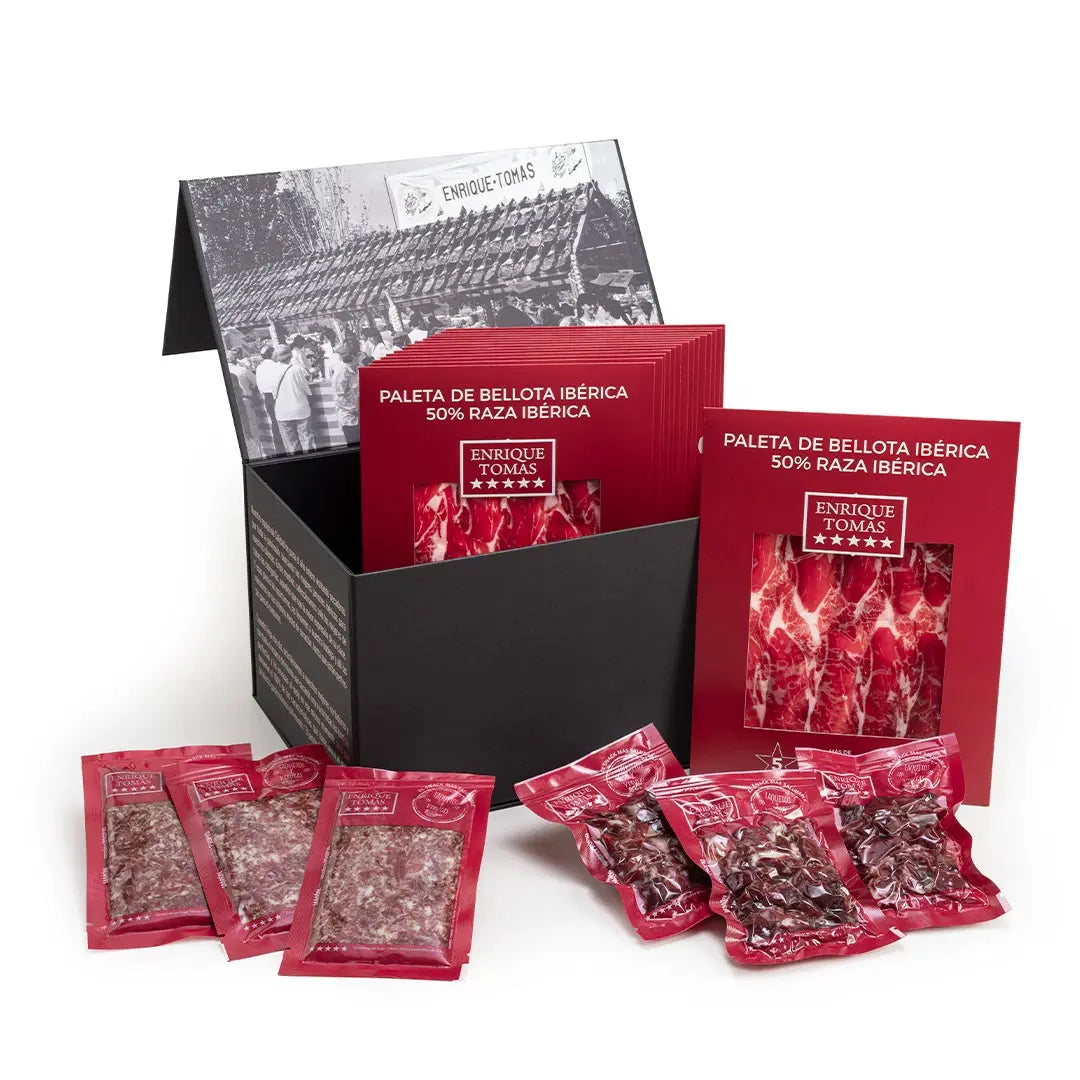 Paleta de Bellota Ibérica 50% raza Ibérica - Selección | No te cortesPaleta de Bellota Ibérica 50% raza Ibérica - Selección | No te cortes
Paleta de Bellota Ibérica 50% raza Ibérica - Selección | No te cortesPaleta de Bellota Ibérica 50% raza Ibérica - Selección | No te cortes- Precio regular
-
229,00 € - Precio regular
-
- Precio de venta
-
229,00 €
Envío gratisVista rápida
-
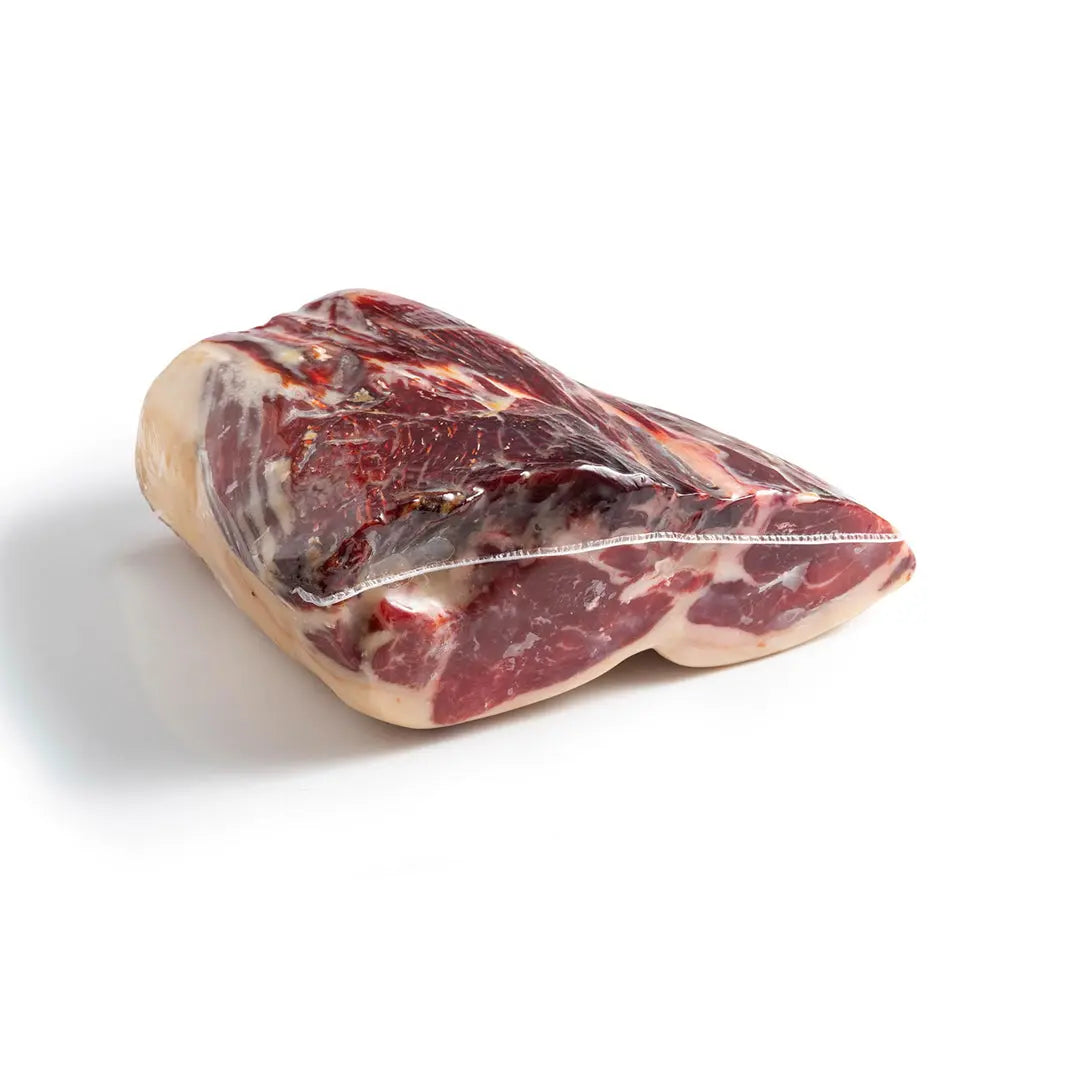
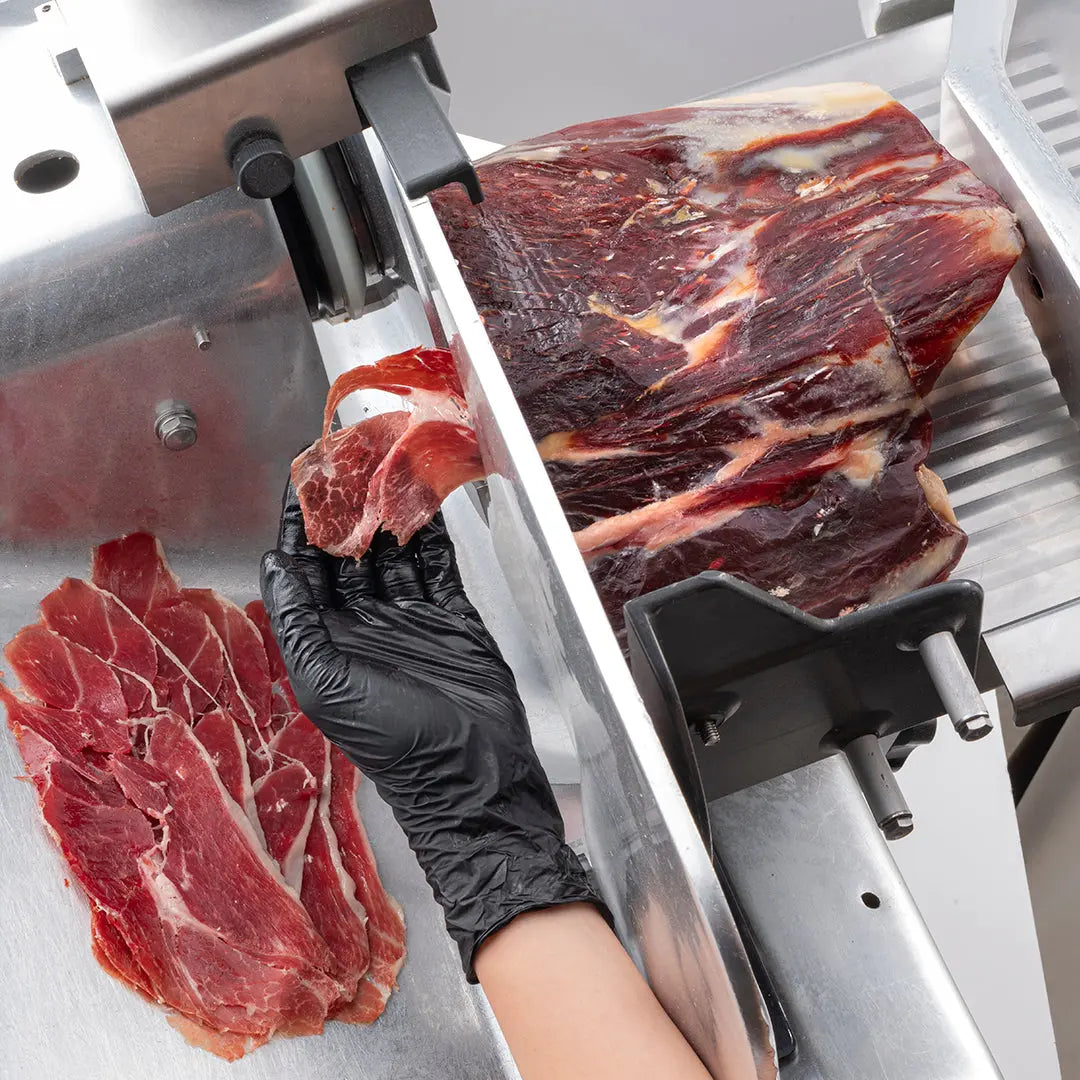 1/2 Jamón de Bellota ibérico 50% raza ibérica - Deshuesado1/2 Jamón de Bellota ibérico 50% raza ibérica - Deshuesado
1/2 Jamón de Bellota ibérico 50% raza ibérica - Deshuesado1/2 Jamón de Bellota ibérico 50% raza ibérica - Deshuesado- Precio regular
-
210,00 € - Precio regular
-
0,00 € - Precio de venta
-
210,00 €
Envío gratisVista rápida
-

 Pack jamón y vino - 5 estrellasPack jamón y vino - 5 estrellas
Pack jamón y vino - 5 estrellasPack jamón y vino - 5 estrellas- Precio regular
-
195,00 € - Precio regular
-
0,00 € - Precio de venta
-
195,00 €
Envío gratisVista rápida
-

 Pack paleta y vino - 5 estrellasPack paleta y vino - 5 estrellas
Pack paleta y vino - 5 estrellasPack paleta y vino - 5 estrellas- Precio regular
-
177,00 € - Precio regular
-
0,00 € - Precio de venta
-
177,00 €
Envío gratisVista rápida
-
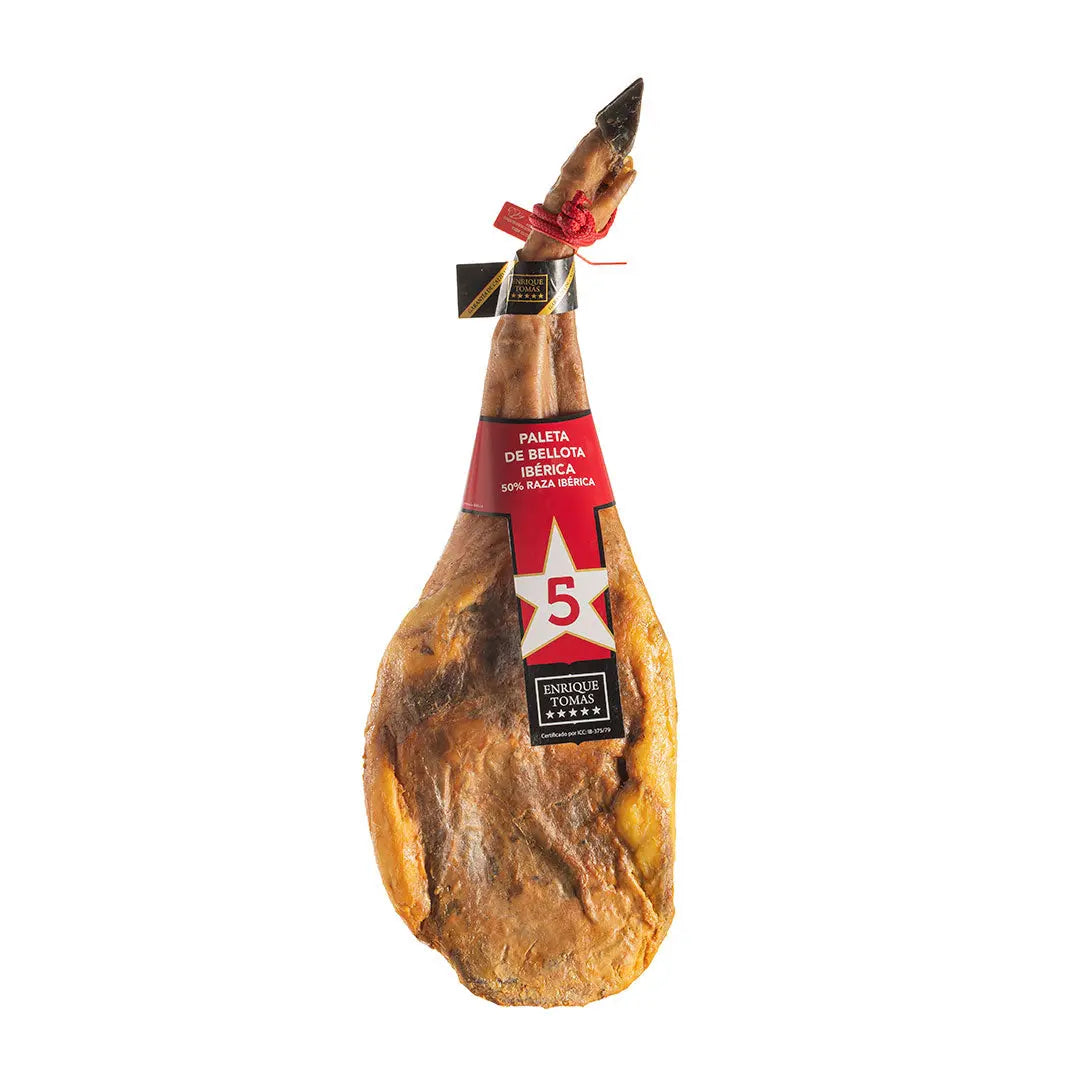
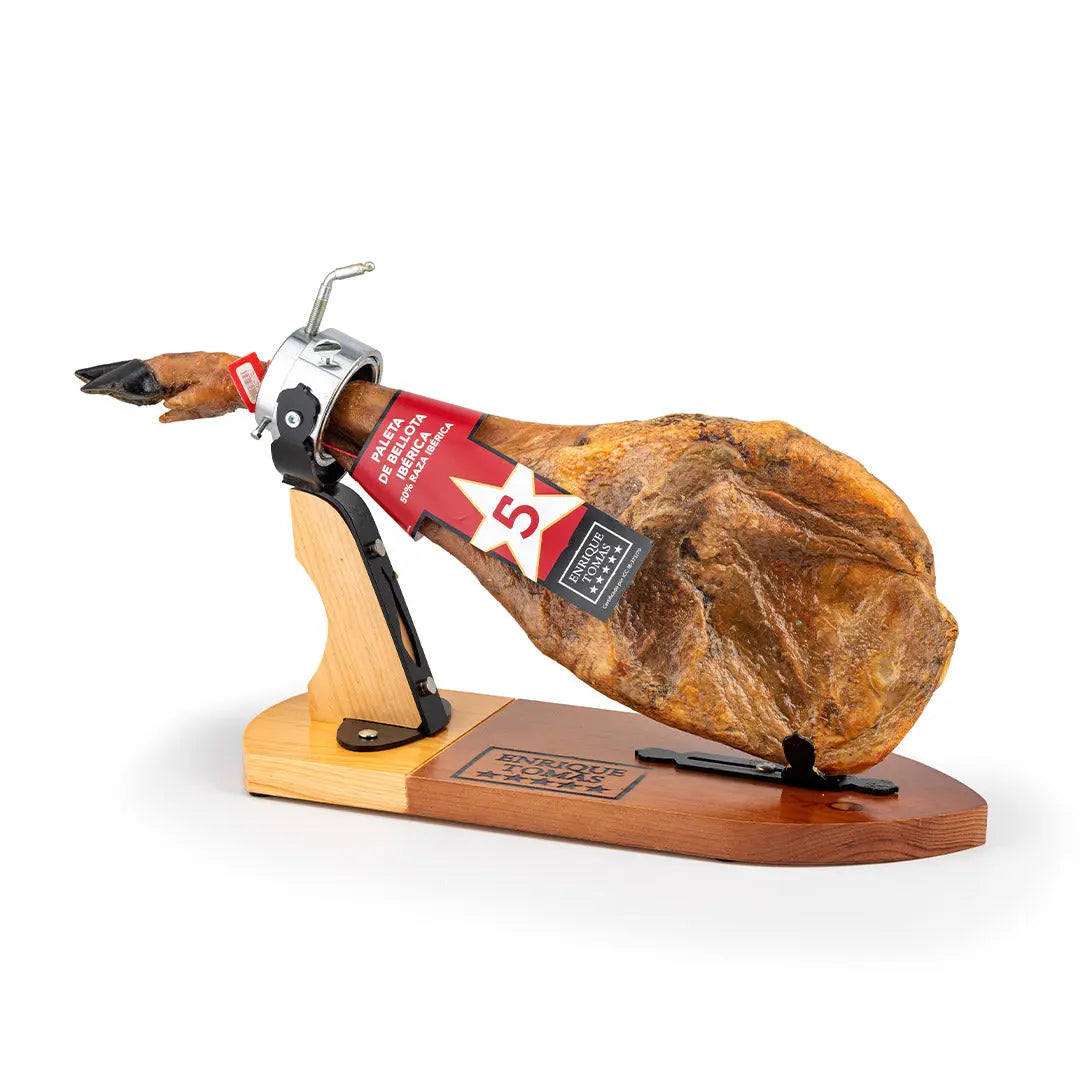 Paleta de Bellota Ibérica 50% raza Ibérica - SelecciónPaleta de Bellota Ibérica 50% raza Ibérica - Selección
Paleta de Bellota Ibérica 50% raza Ibérica - SelecciónPaleta de Bellota Ibérica 50% raza Ibérica - Selección- Precio regular
-
169,00 € 229,00 € - Precio regular
-
- Precio de venta
-
169,00 € 229,00 €
Envío gratisVista rápida
-
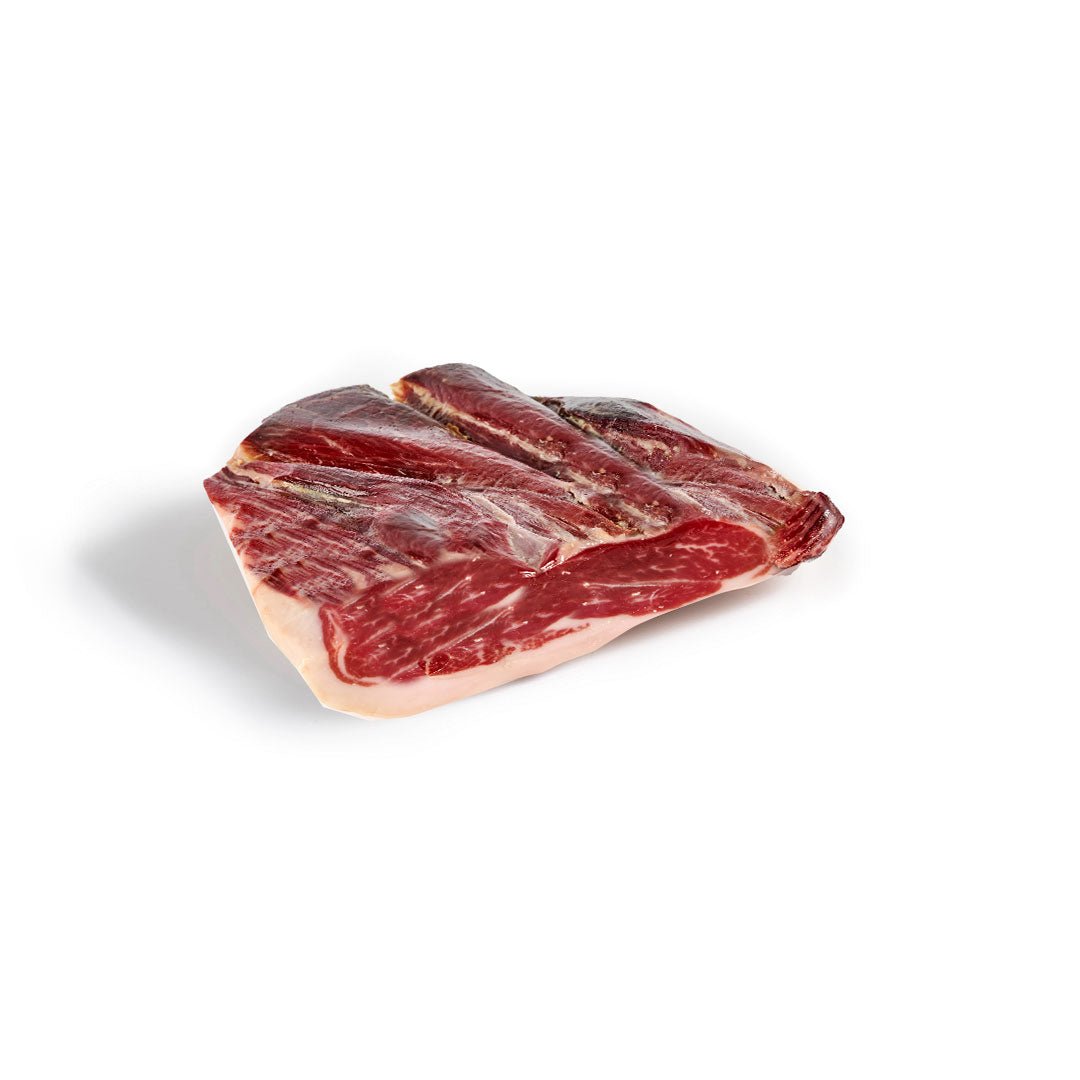
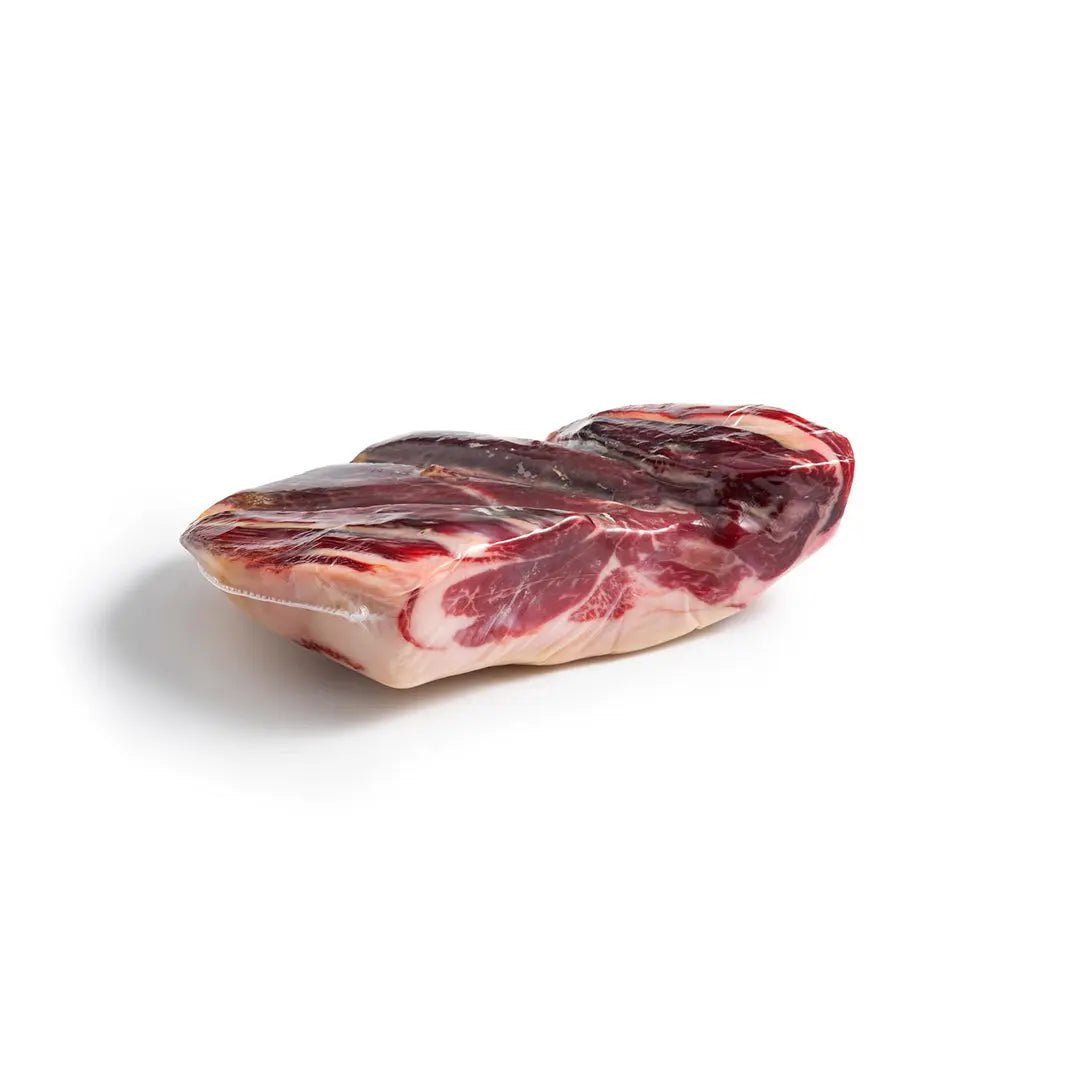 1/2 Paleta de Bellota ibérico 50% raza ibérica - Deshuesada1/2 Paleta de Bellota ibérico 50% raza ibérica - Deshuesada
1/2 Paleta de Bellota ibérico 50% raza ibérica - Deshuesada1/2 Paleta de Bellota ibérico 50% raza ibérica - Deshuesada- Precio regular
-
100,00 € - Precio regular
-
0,00 € - Precio de venta
-
100,00 €
Vista rápida
-
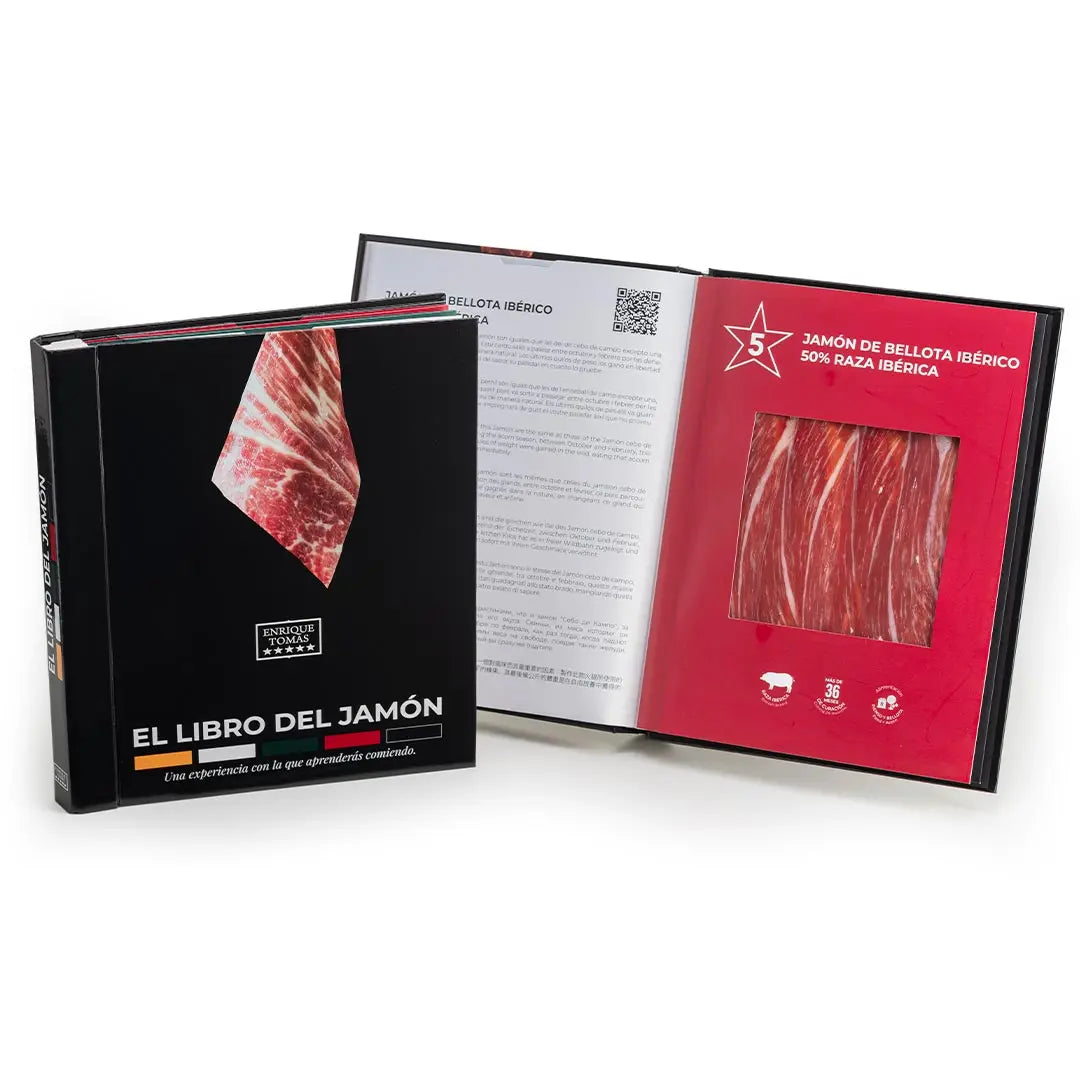
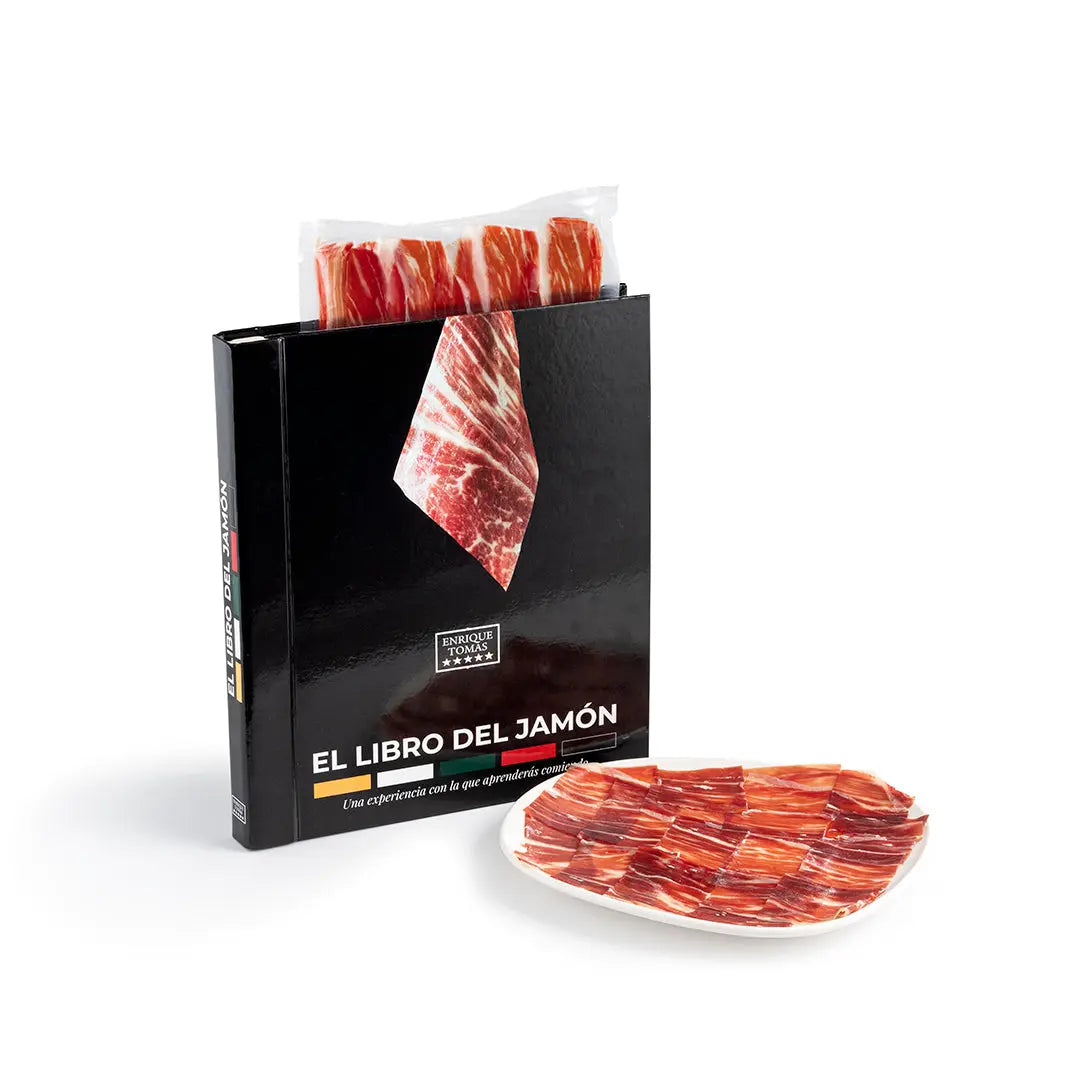 Libro de la Experiencia del Jamón - 5 calidadesLibro de la Experiencia del Jamón - 5 calidades
Libro de la Experiencia del Jamón - 5 calidadesLibro de la Experiencia del Jamón - 5 calidades- Precio regular
-
85,00 € - Precio regular
-
0,00 € - Precio de venta
-
85,00 €
Vista rápida
-
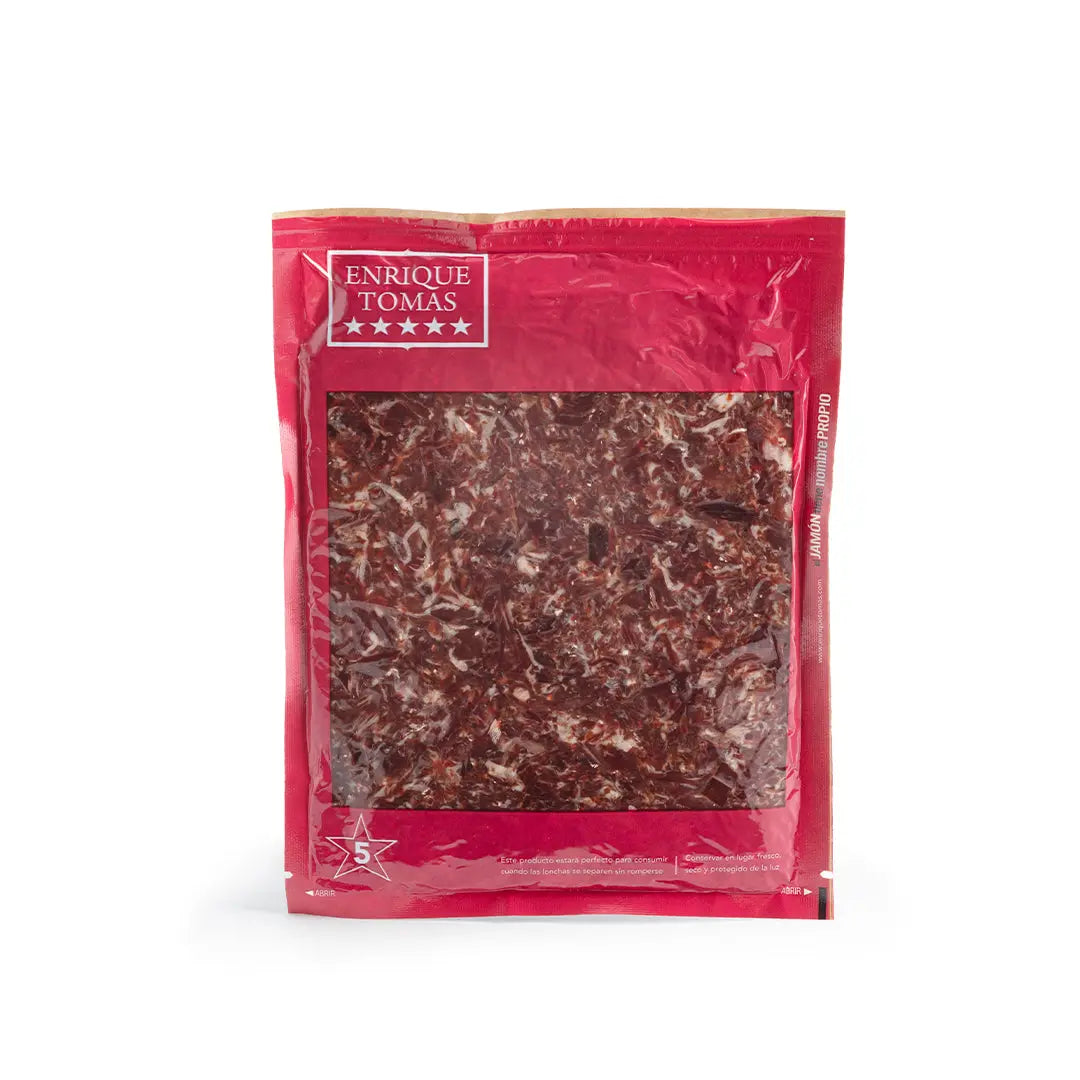
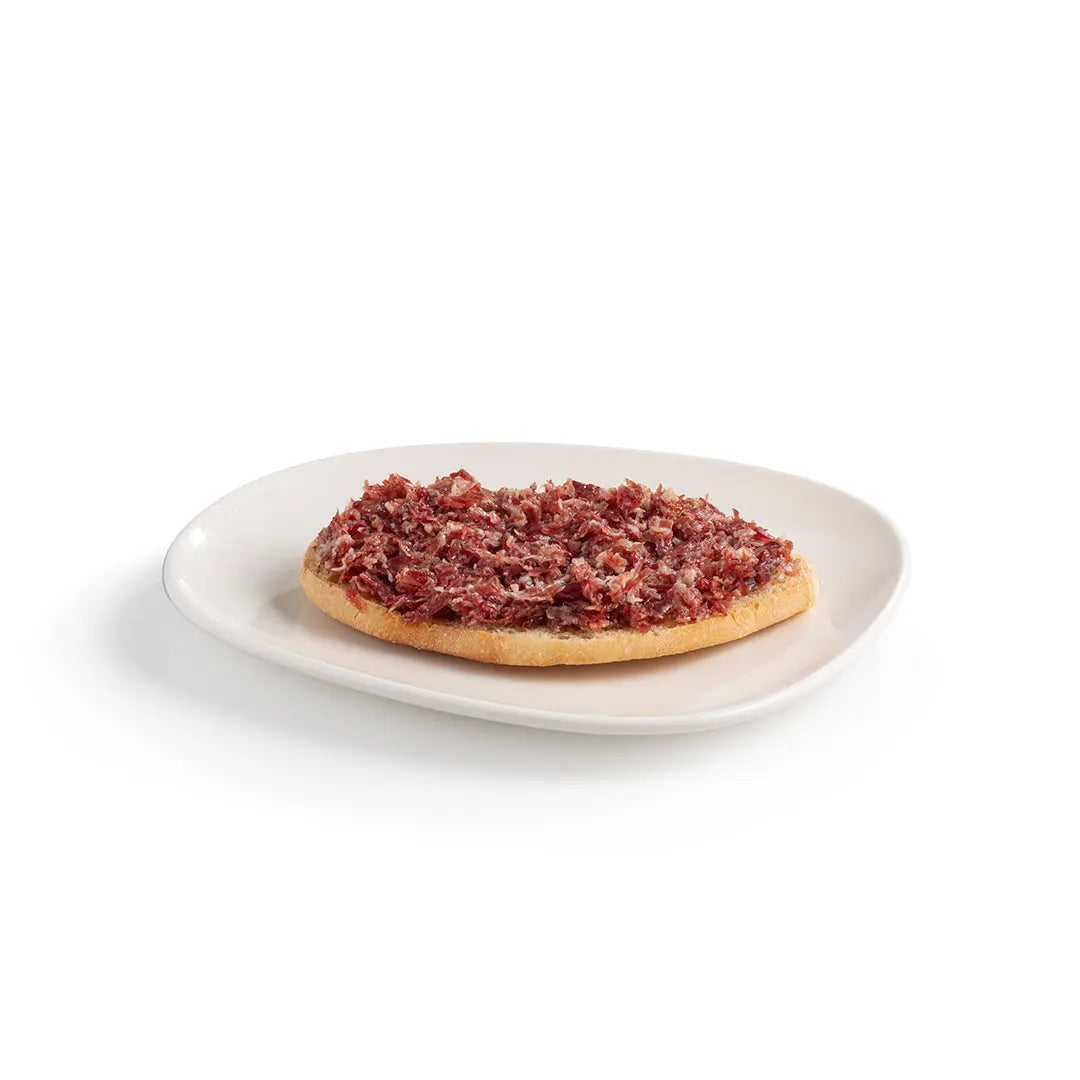 Virutas de Jamón Enrique Tomás 5 Estrellas -400gVirutas de Jamón Enrique Tomás 5 Estrellas -400g
Virutas de Jamón Enrique Tomás 5 Estrellas -400gVirutas de Jamón Enrique Tomás 5 Estrellas -400g- Precio regular
-
30,00 € - Precio regular
-
- Precio de venta
-
30,00 €
Vista rápida
-
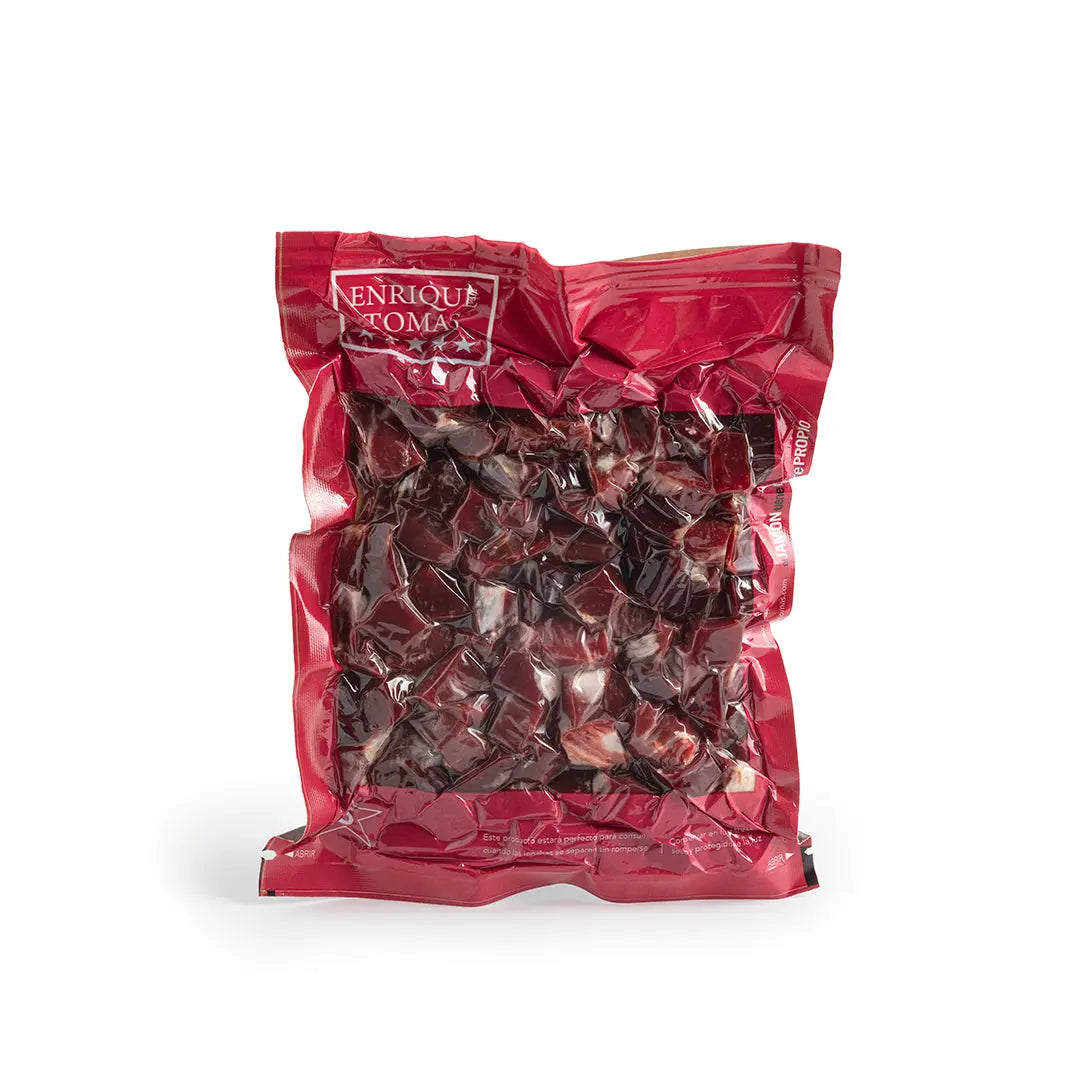
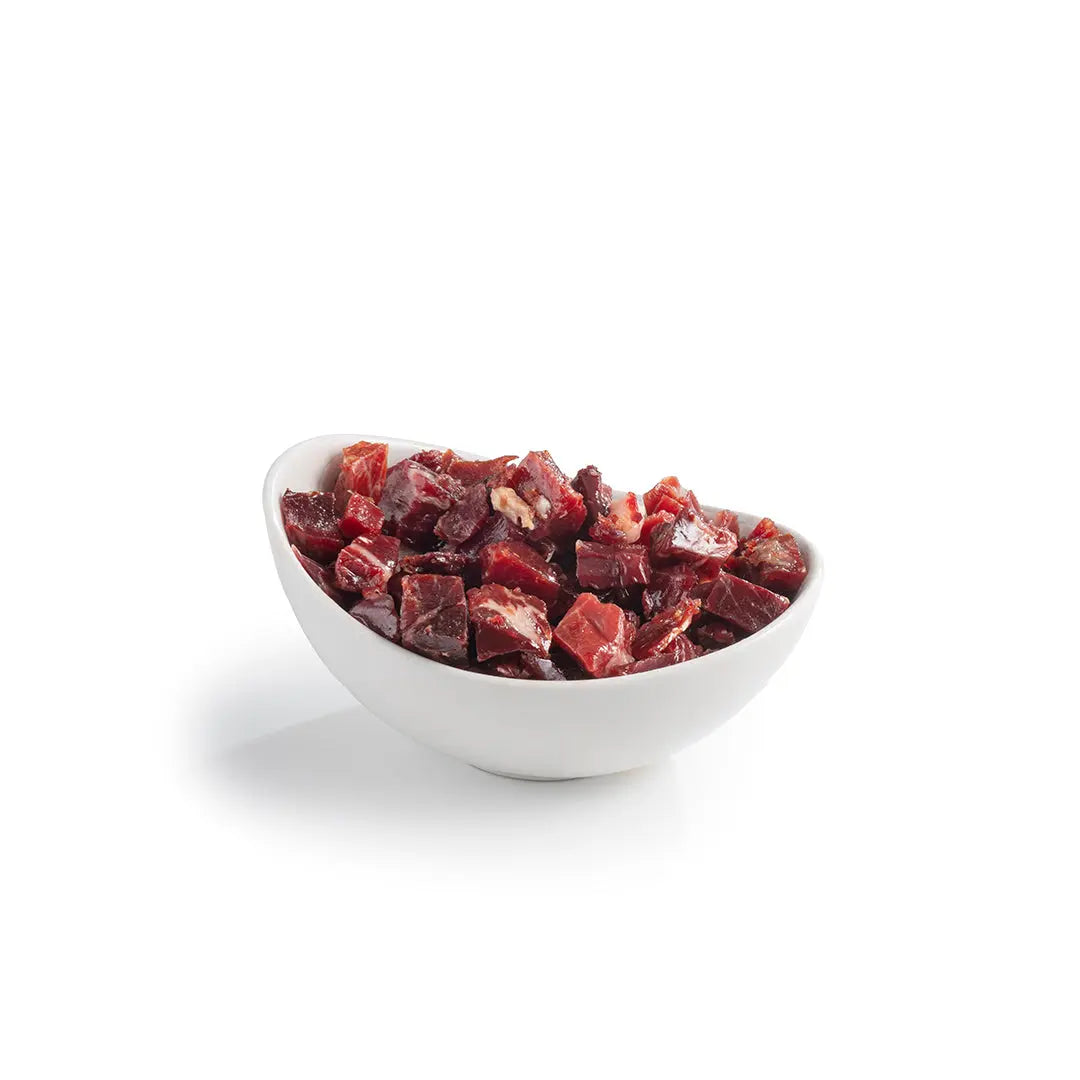 Taquitos de jamón 5 Estrellas -400gTaquitos de jamón 5 Estrellas -400g
Taquitos de jamón 5 Estrellas -400gTaquitos de jamón 5 Estrellas -400g- Precio regular
-
30,00 € - Precio regular
-
- Precio de venta
-
30,00 €
Vista rápida
-
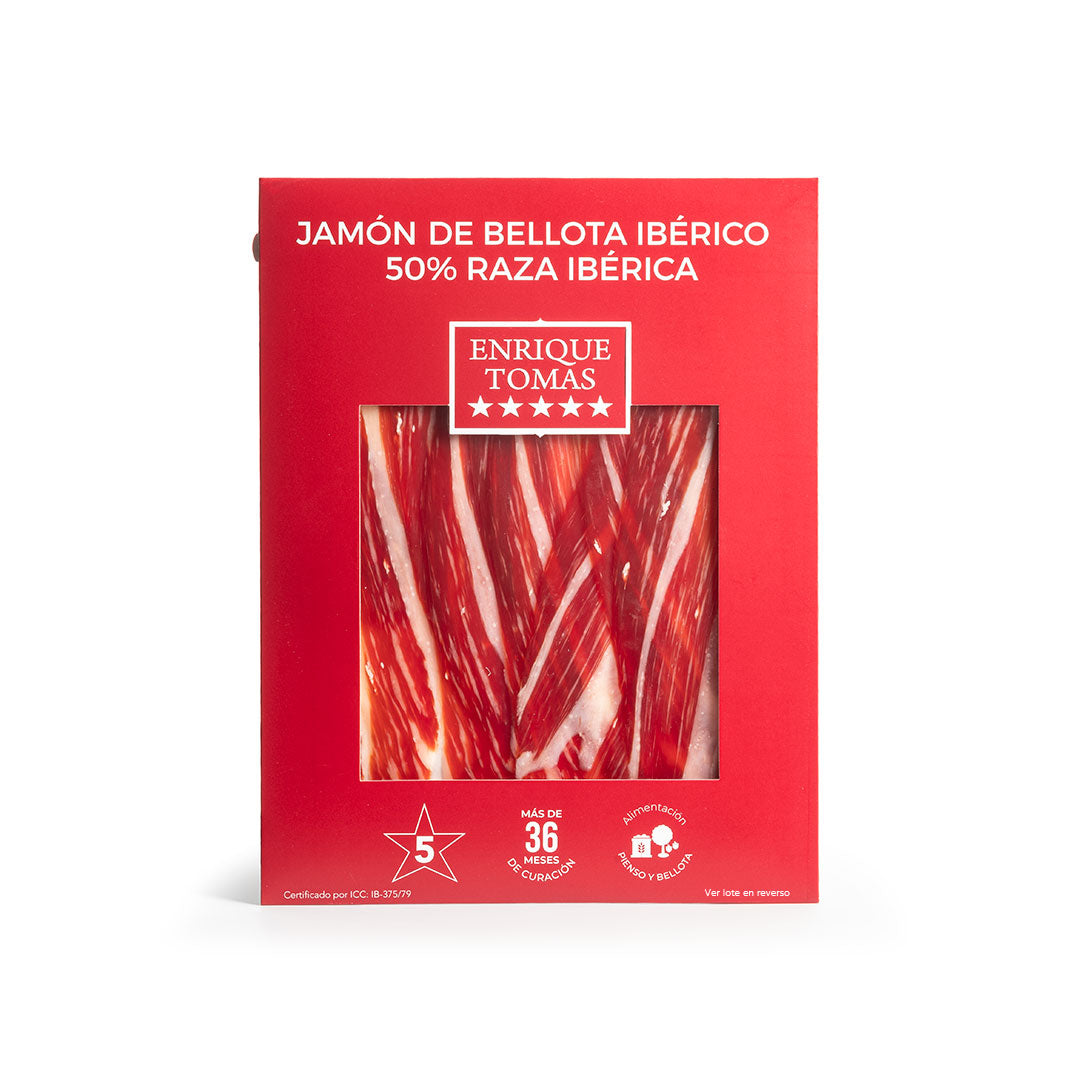
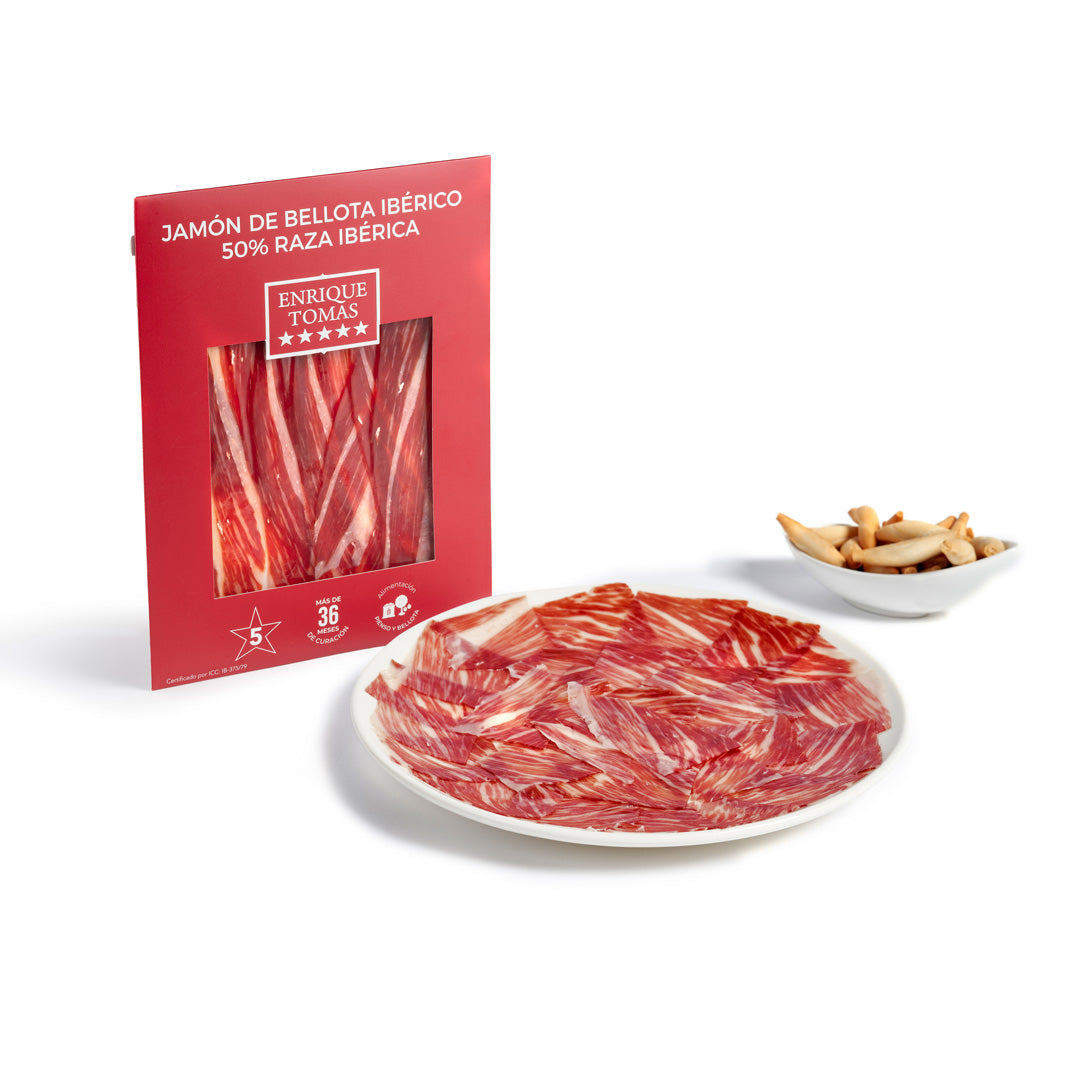 Jamón de Bellota Ibérico 50% raza Ibérica - Sobre 80grJamón de Bellota Ibérico 50% raza Ibérica - Sobre 80gr
Jamón de Bellota Ibérico 50% raza Ibérica - Sobre 80grJamón de Bellota Ibérico 50% raza Ibérica - Sobre 80gr- Precio regular
-
17,80 € - Precio regular
-
0,00 € - Precio de venta
-
17,80 €
Vista rápida
-
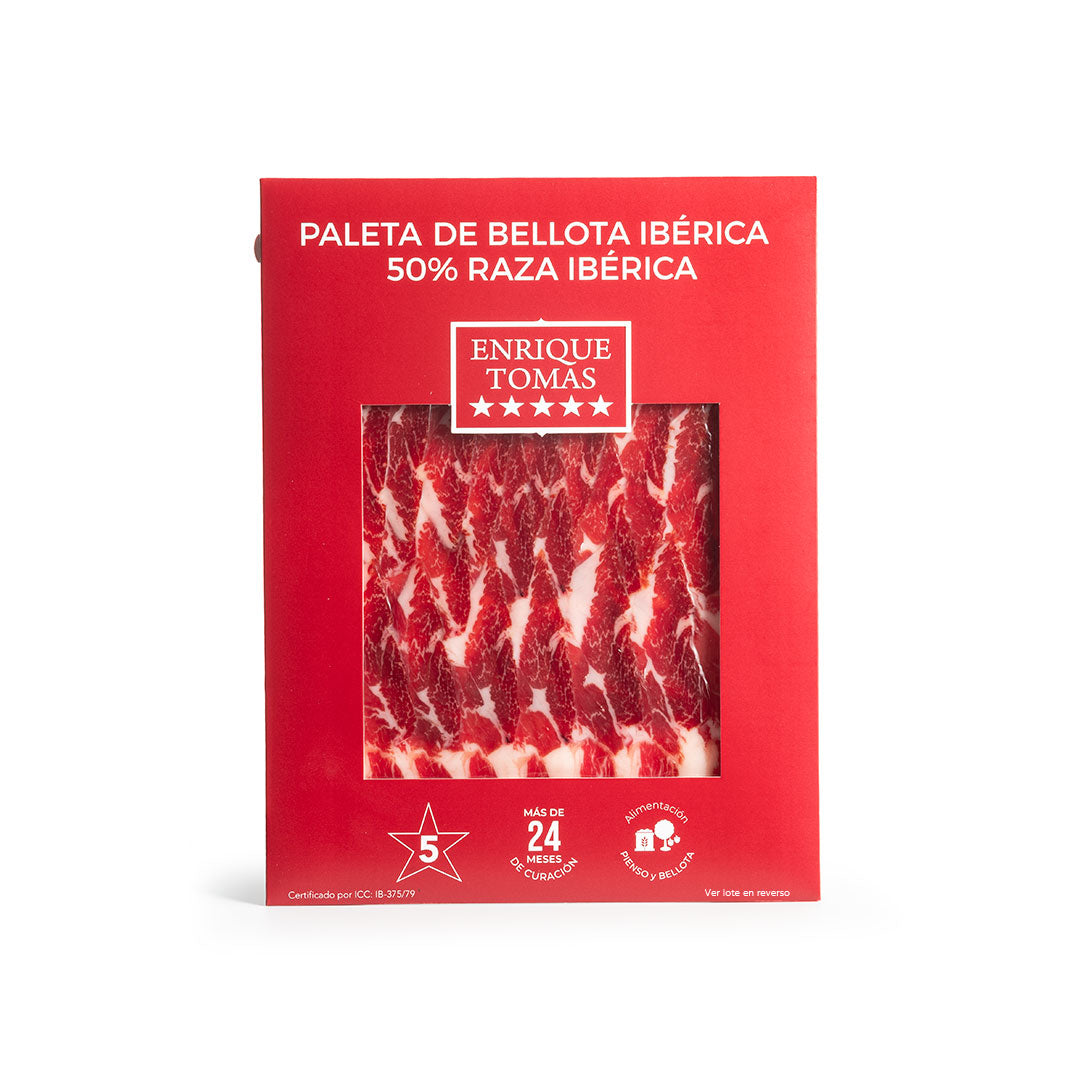
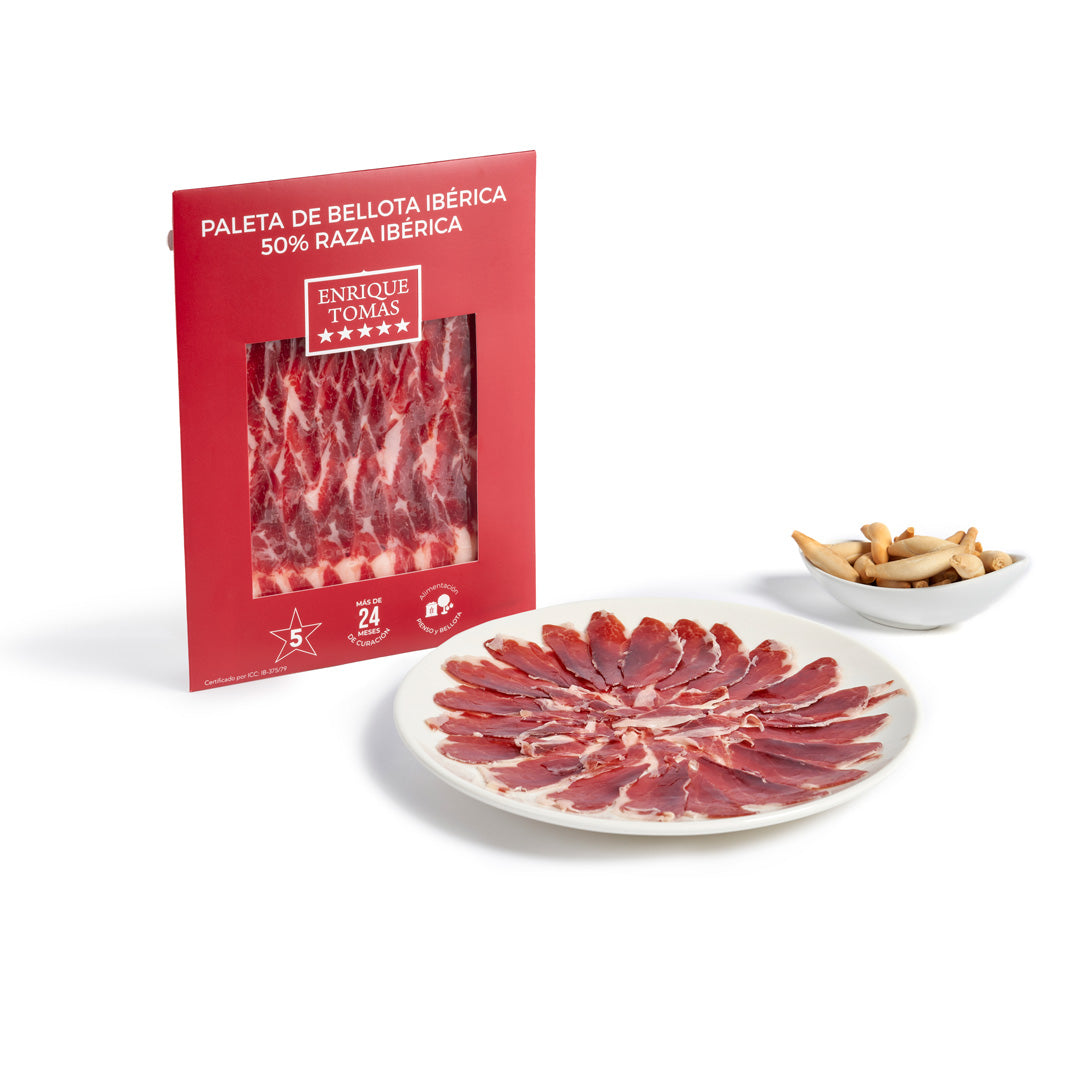 Paleta de Bellota Ibérica 50% raza Ibérica - Sobre 80grPaleta de Bellota Ibérica 50% raza Ibérica - Sobre 80gr
Paleta de Bellota Ibérica 50% raza Ibérica - Sobre 80grPaleta de Bellota Ibérica 50% raza Ibérica - Sobre 80gr- Precio regular
-
15,80 € - Precio regular
-
0,00 € - Precio de venta
-
15,80 €
Vista rápida
-
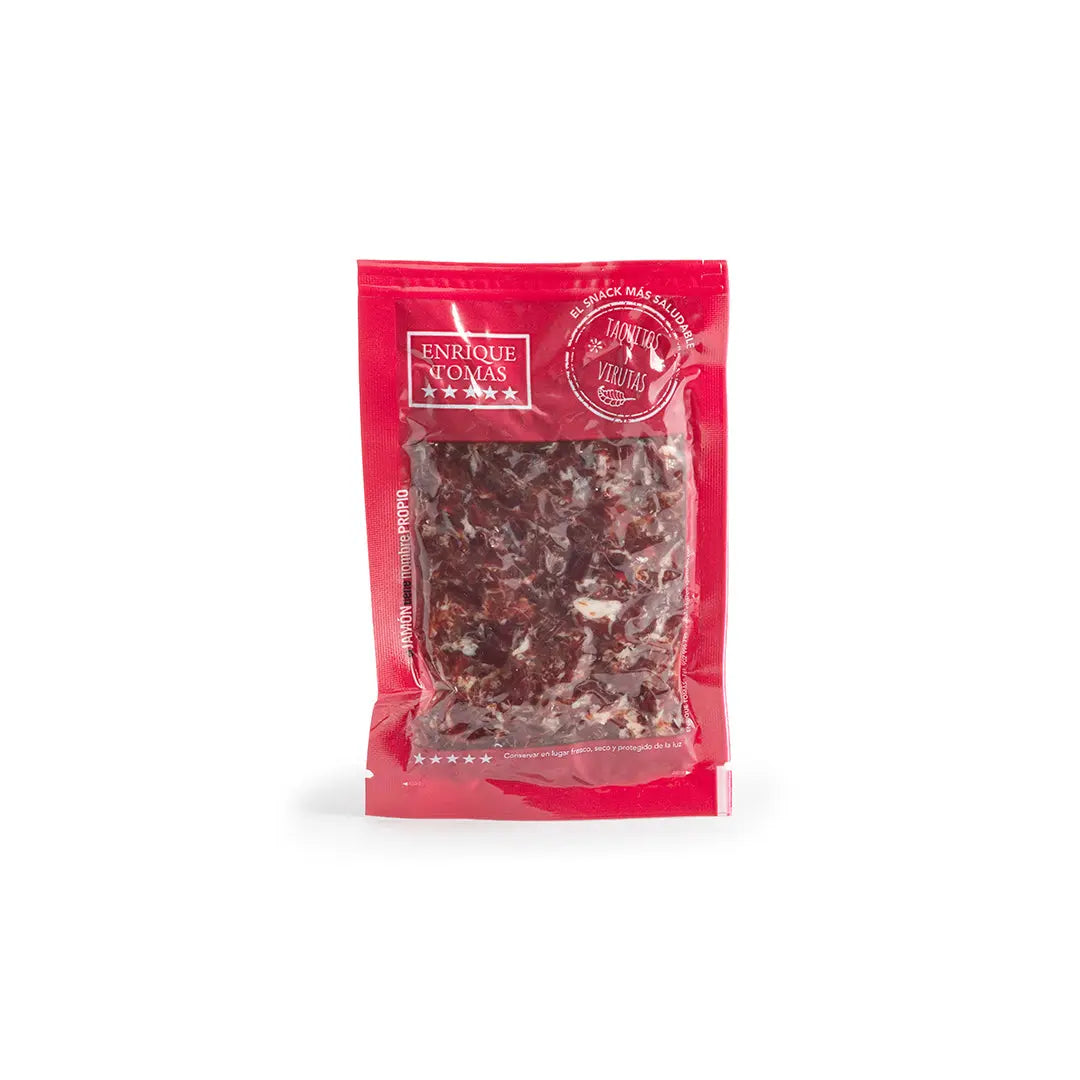
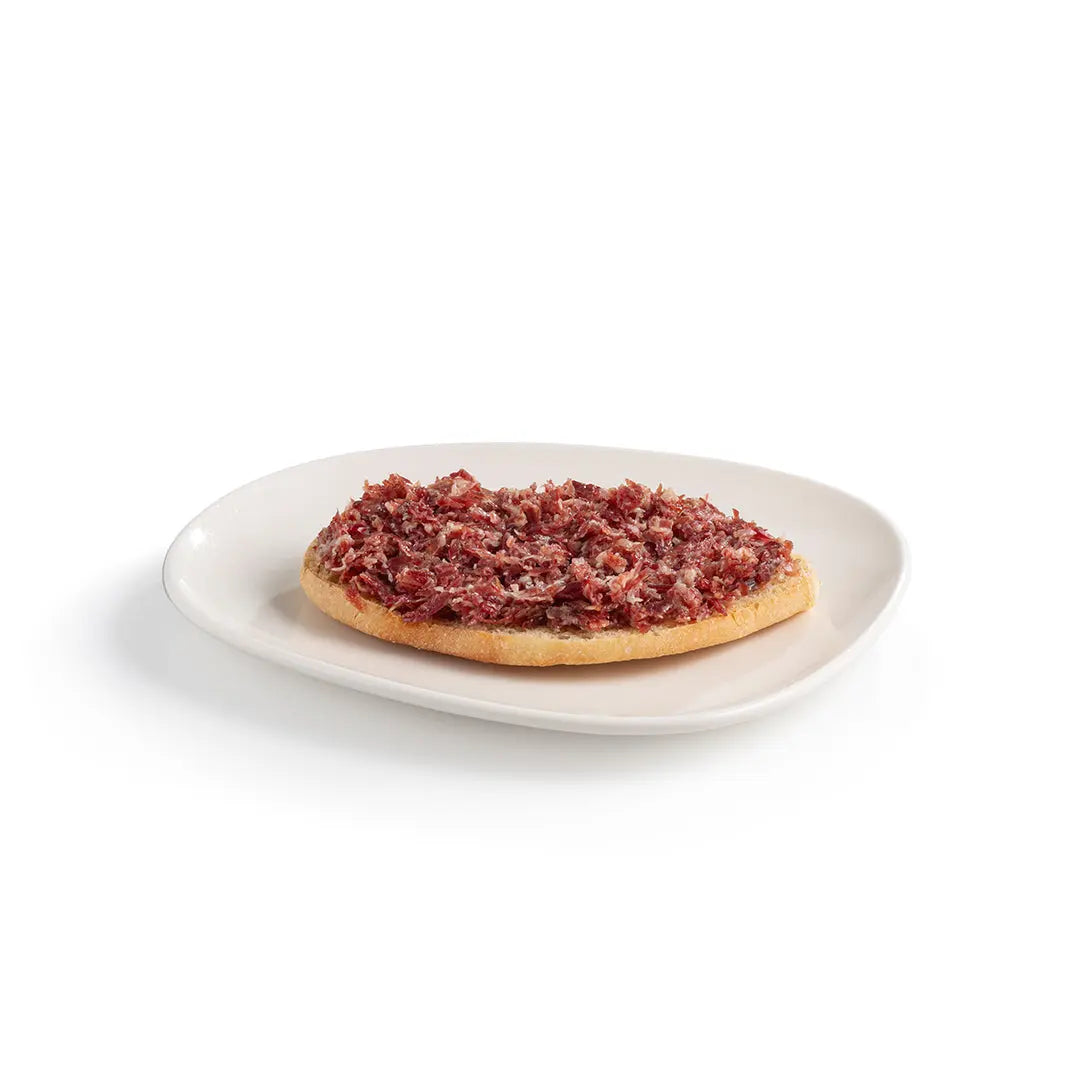 Virutas de Jamón Enrique Tomás 5 Estrellas -100gVirutas de Jamón Enrique Tomás 5 Estrellas -100g
Virutas de Jamón Enrique Tomás 5 Estrellas -100gVirutas de Jamón Enrique Tomás 5 Estrellas -100g- Precio regular
-
7,50 € - Precio regular
-
- Precio de venta
-
7,50 €
Vista rápida
-
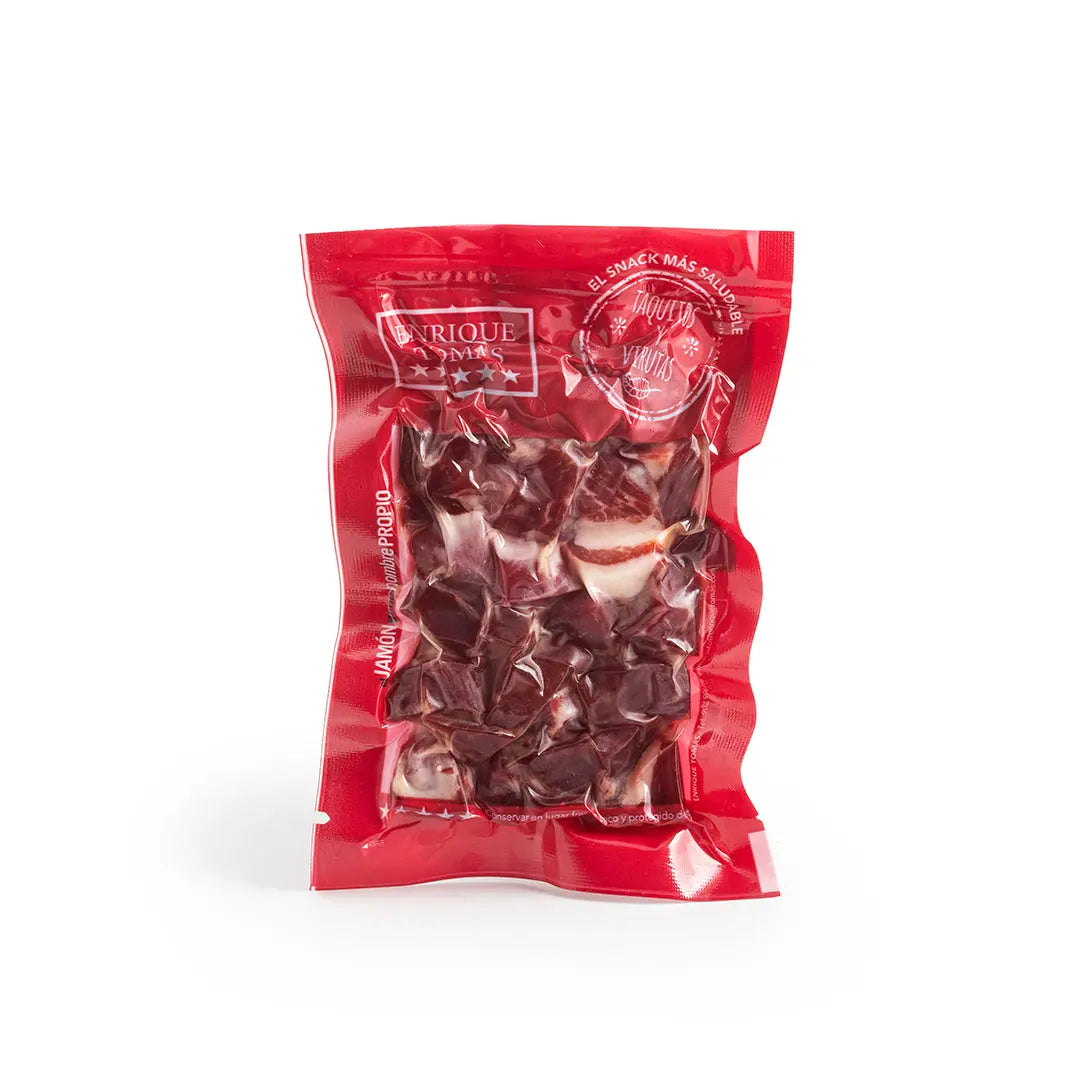
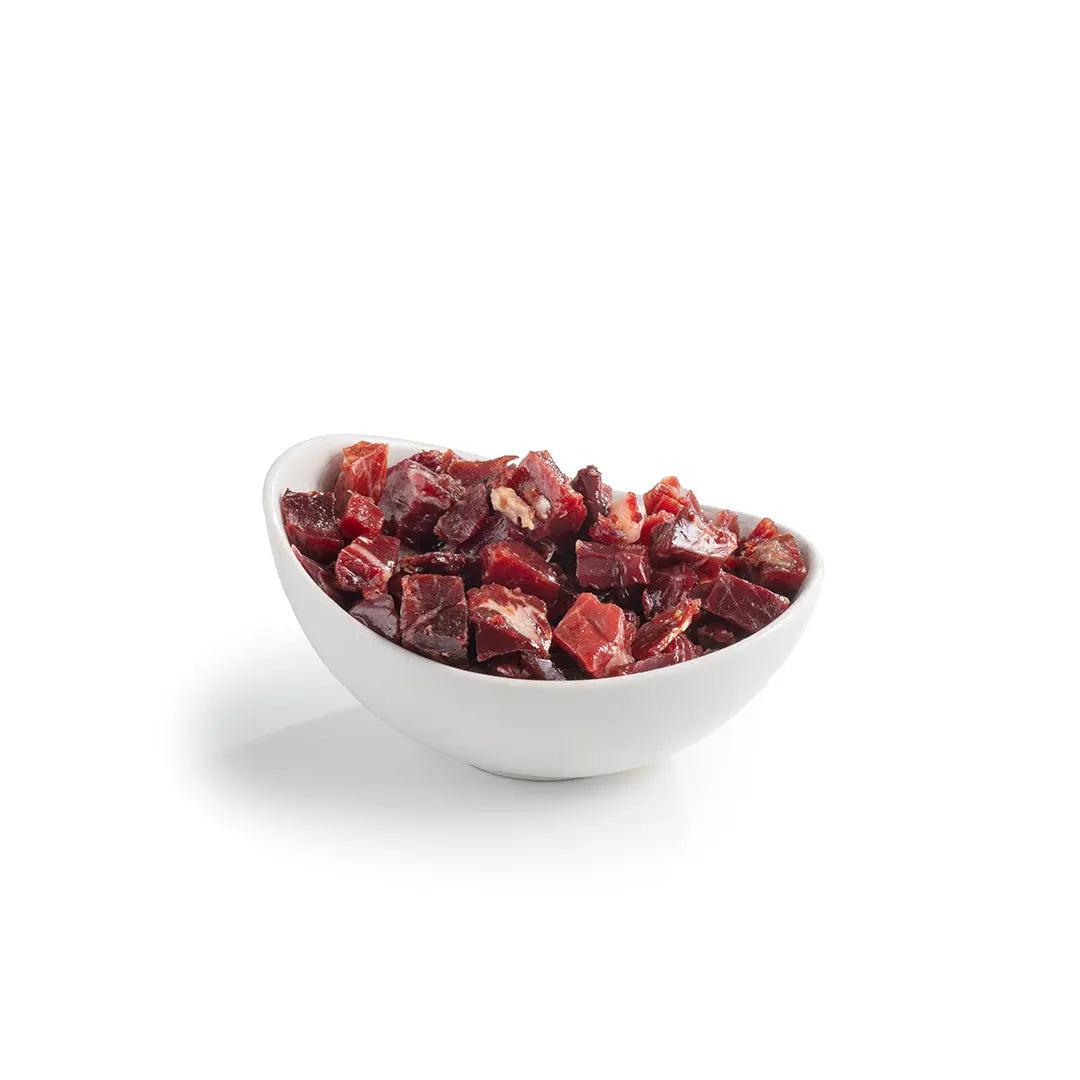 Taquitos de Jamón 5 Estrellas -80gTaquitos de Jamón 5 Estrellas -80g
Taquitos de Jamón 5 Estrellas -80gTaquitos de Jamón 5 Estrellas -80g- Precio regular
-
6,50 € - Precio regular
-
0,00 € - Precio de venta
-
6,50 €
Vista rápida
El Jamón ibérico 50% raza ibérica procede de las extremidades del cerdo ibérico, un animal criado solo en la Península Ibérica con rasgos fisiológicos diferentes a otras razas de cerdo, y que lo hacen único en el mundo como es la capacidad exclusiva de infiltrar la grasa en el músculo, entre otras diferencias. Por ello, su carne es muy jugosa y sabrosa resultando en un jamón incomparable a ningún otro del mercado. Así, es reconocido mundialmente como una joya gastronómica que se elabora exclusivamente en España. Te explicamos todo si deseas probar y comprar jamón ibérico 50% raza ibérica.
PREGUNTAS FRECUENTES
¿DÓNDE SE PUEDE COMPRAR JAMÓN IBÉRICO?
Puedes comprarlo en las tiendas de delicatessen del país donde vives. Si no lo encuentras y no es el que te gusta, sólo tienes que pedirlo a través de nuestra web/tienda online y te lo enviaremos de forma rápida y segura a donde quieras.
¿QUÉ ES EL JAMÓN IBÉRICO?
El jamón ibérico es único en el mundo y procede únicamente del cerdo de su mismo nombre, cerdo ibérico, que tiene la capacidad exclusiva de infiltrar grasa en el músculo. Se elabora a partir de las extremidades traseras, curadas en sal y secadas en bodegas naturales por expertos jamoneros que siguen una larga tradición transmitida de generación en generación.
¿CUÁLES SON LOS DIFERENTES TIPOS DE JAMÓN IBÉRICO?
El jamón ibérico se puede clasificar según la raza y la alimentación. En cuanto a la raza se clasificará en función del porcentaje de raza, 50%, 75% o 100%. En cuanto a la alimentación, el jamón ibérico, puede denominarse "de cebo ibérico", en función de si ha permanecido solo en la granja y ha comido pienso y cereales, " cebo de campo ibérico" si ha seguido la alimentación en granja y ha tenido libertad en el campo, y de "bellota ibérica", en el caso de que haya hecho la Montanera y por lo tanto ha comido hierbas silvestres y bellotas mientras pastaba en la dehesa hasta alcanzar el peso adecuado.
¿CUÁL ES EL MEJOR JAMÓN IBÉRICO?
Para saber cuál es el mejor, si no los conoces bien, lo ideal es que los pruebes todos y luego el que más te guste será el mejor. En Enrique Tomás sabemos que el mejor jamón es el que deleita a tu paladar cuando lo pruebas, independientemente del precio o la variedad. Lo importante es que, sea el que sea, compres la mejor calidad de su gama.
¿CÓMO/CUÁNDO COMER JAMÓN?
El jamón se consume a cualquier hora del día, en el desayuno, la comida y la cena. Y, por supuesto, como merienda. Dependiendo de la hora del día, puede comerse en forma de bocadillo, en tacos como tapa, en lonchas como aperitivo, como taquitos o virutas de jamón con una sopa o una ensalada. Puedes disfrutarlo a todas horas, sólo tienes que elegir el formato que más te convenga según el momento del día y según el plato.
¿PUEDO COMPRAR UNA PIEZA ENTERA DE JAMÓN IBÉRICO Y PEDIR QUE ME LA CORTEN?
Por supuesto, si eliges la pieza de jamón o paleta que más te guste, verás que puedes optar por la pieza entera o en lonchas. El coste del servicio de loncheado está incluido en el precio e incluye el corte y el envasado al vacío de toda la pieza, tanto las lonchas como los taquitos y las virutas.
¿COMPRO JAMÓN CON HUESO O EN LONCHAS?
Responde a esta pregunta con otra: ¿domino la técnica del corte? Si nunca has cortado jamón español o te sientes inseguro, lo mejor es que lo pidas ya cortado porque no sólo no te harás daño, sino que obtendrás más jamón que si lo cortas tú mismo porque nuestros expertos lo aprovechan al máximo.
Por otro lado, la gran ventaja de pedirlo loncheado es que puedes consumirlo a medida que lo necesites y a lo largo de varios meses, mientras que si lo compras entero (con hueso) se recomienda consumirlo en unas tres semanas y la paleta en dos semanas.
LO QUE NECESITAS SABER SOBRE JAMÓN IBÉRICO RAZA IBÉRICA
¿Sabías que el jamón ibérico raza ibérica corresponde a la pata trasera del auténtico cerdo de la Península Ibérica? Empezamos por el principio, indagando un poco más sobre este jamón basándonos en tres variables que nos permiten diferenciarlo perfectamente: la raza, la alimentación y la procedencia.

LA RAZA: EL CERDO IBÉRICO
El cerdo ibérico es una especie única con características que lo diferencia de otros animales de la misma especie, como, por ejemplo, la capacidad de infiltrar grasa en el músculo. Físicamente hablando, estos animales presentan una cabeza bien proporcionada y un hocico puntiagudo, a diferencia de otro tipo de cerdos, el ibérico tiene un cuello potente, la papada caída, las orejas de tamaño mediano en forma de visera y un amplio vientre. Sus extremidades, las que más nos interesan a la hora de hablar de jamón, son finas.

EL PROCESO DE CURACIÓN DEL JAMÓN IBÉRICO RAZA IBÉRICA
Otra de las variables más importantes a tener en cuenta para diferenciar el jamón ibérico, y sobretodo el 100% ibérico del resto, es como decimos en Enrique Tomas: “el cocinado”. Este cocinado no es, nada más y nada menos, que las condiciones en las que se conserva la pata, en la cantidad de sal, en la temperatura de conservación y en el tiempo de curación. En definitiva, un jamón está curado con tiempo, sabiduría, mimo y sal.

En el caso del jamón ibérico raza ibérica, desde que nace el animal, termina todo el proceso y lo compramos, pueden pasar cinco años. Para su curación hay que salar el jamón y dejarlo curar a una temperatura exacta. Este proceso de curación dura entre treinta y seis a cuarenta y ocho meses, según el peso de cada pieza.
TIPOS DE JAMÓN IBÉRICO RAZA IBÉRICA
Los tipos de jamón ibérico lo determinará obviamente la raza, que será siempre ibérica, el lugar o lugares donde se ha criado y el más importante, el tipo de alimentación que ha seguido en edad adulta.
Cerdo ibérico criado exclusivamente en granja.
Un cerdo ibérico criado en granja exclusivamente se ha alimentado de pienso y cereales, también en edad adulta. Estos suelen ser cerdos de 50% de raza ibérica. O sea, madre 100% ibérica y padre de raza no ibérica.
El resultado es un jamón de cebo ibérico.
Cerdo ibérico criado en granja y en el campo
Este cerdo ibérico suele tener un porcentaje de raza de 50% o 75% de raza ibérica y se ha criado en parte en granja donde ha comido pienso y en parte en el campo donde ha pastado a sus anchas y ha comido frutos y hierbas silvestres.
El resultado es un Jamón de Cebo de Campo ibérico
Cerdo ibérico que ha hecho la Montanera
Estos cerdos ibéricos han sido como el resto criados en granja y han comido pienso, pero al alcanzar la edad adulta, por su calidad y el porcentaje de raza ibérica, el ganadero decide que debe hacer la Montanera
La Montanera es un periodo de 4 meses que va de otoño a invierno en el que los cerdos ibéricos pastando en total libertad en la dehesa ibérica, lugar en el que las encinas están es su punto de dar el mejor fruto que necesita el cerdo ibérico para dar el Jamón Ibérico más preciado del mundo, el Jamón de Bellota.
Estos cerdos no van a comer solo bellotas y todo lo natural que encuentren, sino que van a beber agua de los ríos y por lo tanto van a hacer mucho ejercicio, lo que va a contribuir en una buena musculación de sus extremidades. Todo ello contribuirá en la elaboración del mejor Jamón del mundo, el Jamón de bellota 100% ibérico o popularmente conocido como Pata Negra, o sea un jamón que procede de padre y madre 100% ibéricos. Pero también puede haber Jamón de Bellota 50% ibérico, donde la madre debe ser también 100% ibérica pero el padre no es de raza ibérica.
Jamón de Bellota 100% Ibérico, 5 Estrellas Premium, Enrique Tomás
Jamón de Bellota Ibérico 50% raza Ibérica, 5 Estrellas, Enrique Tomás


